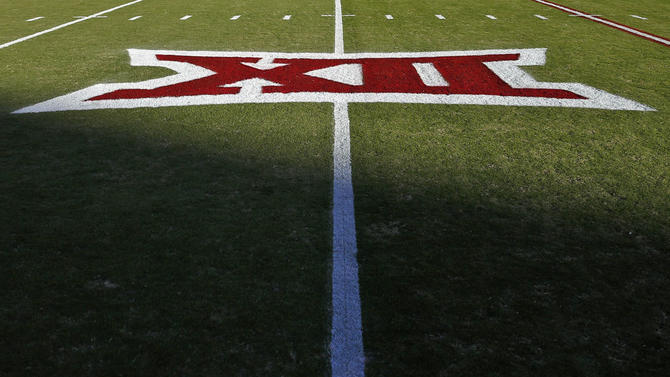When the Big 12 gathers next week for one of the most important meetings in its history, the main cast of characters will not need introductions.
Let's take a look at them anyway.
Bob Bowlsby is the dispassionate commissioner. He is fine with anything the conference does -- be it expansion, building a network and/or adding a championship game during those meetings Tuesday through Friday in Dallas. He just doesn't want to be the driving force behind it. "I don't have a vote," Bowlsby said. "But if they want an opinion, I'll give it."
Oklahoma president David Boren is the emotional expansion advocate who seems to have cooled on the subject.
A.J. Maestas is a 39-year-old CEO of the Chicago analytics firm who became a minor celebrity earlier this month in Phoenix. Little did we know the man who offered detailed College Football Playoff odds for the Big 12 grew up 80 miles south of the Arctic Circle.
"Alaska sounds exotic, but it's really not that pleasant," Maestas said. "There's really kind of strange people, a lot of people running from something. The winters are harsh, there's not a lot of women and a lot of substance abuse."
What does this have to do with Big 12 expansion?
Because of that humble background, Maestas wakes up each day feeling incredibly lucky. His firm, Navigate Research has done a TV deal for Australia's national rugby league and consulted with the NHL on expansion.
How hard can Big 12 expansion be?
"Basically, if there is a really big transaction in sports at $10 million-plus, there's a pretty good chance we're involved," Maestas said. "Because I talk fast, people mistake me for being smart."
Chris Bevilacqua, the veteran media consultant, is hitting clean-up next week. He is expected to speak to Big 12 officials at the conclusion of the meetings on Friday. Bevilacqua is best known for creating what you now know as ESPN Classic. With College Sports Television (CSTV), Bevilacqua proved there was a viewership for old college football games. And what makes up a large part of the programming on the wildly popular Big Ten and SEC networks? Yup, you got it. Bevilacqua's presentation will go a long way toward deciding whether there will be a Big 12 Network.
"The presentation is big," Bowlsby said, "and it's dense. It's got lots of numbers and lots of forecasts and lots of possibilities. They won't come to us with one recommendation. They'll lay out an array of options."
The league continues to put the funk in dysfunction. A shotgun marriage continues. A conference formed in conflict (merging of Big Eight and Southwest Conference) seems to destined to stay that way.
There isn't likely to be resolution next week, only more questions. But boring, the Big 12 is not.
Here's a primer of what to watch for next week at the spring meetings ...

Expansion: For the Group of Five schools eager to move up in expansion, the Big 12 represents the last flight out. In the entirety of conference realignment at the beginning of this decade, two Group of Five schools moved up to power conferences -- Utah and TCU.
If the Big 12 expands, it would equal or surpass that number in one move. With no other conference movement expected for perhaps the next decade, this is those schools' last chance to brand their school in the Power Five.
Memphis is willing to buy its way in. Houston has a reality star billionaire in its corner. UConn believes the big time is its birthright. (Just read Twitter.)
In the Big 12, those schools would be making $24 million per year. In the American Athletic Conference, they make less than $2 million in TV revenue. There's not much room left on that last flight.
Temp agency: Three of the 10 presidents at the meetings who will be making these momentous decisions have "interim" before their title -- Baylor, Kansas State and Texas Tech.
That means fill-ins could be making calls that last for decades. And who even represents Baylor in Dallas? Its strongest expansion supporter -- former president Ken Starr -- had that title removed in the sexual assault scandal.
In this clash of clans, there are too many diverse cultures to start. Now we're going to have understudies involved?
In the blink of an eye: The media rights agreement with ESPN and Fox lasts only eight more years, shorter if some member attempts to challenge the grant of rights that essentially binds the league together.
There is already widespread speculation that college football is headed to four 16-team super conferences. That would probably occur by the middle of the next decade when most of the current media rights agreements expire.
One TV industry insider put it succinctly this week: Does the Big 12 want to risk upsetting its rightsholders by asking for more money in expansion? Any combination of teams currently available makes the conference worse in football.
How does that enhance the overall value of the league when it does have to go to market again in 2025? It might not. These networks have long memories.
Think free agency on a grand stage starting with ...
Oklahoma and Texas: They're the only Big 12 schools that really have options if the league breaks up. There has been word for years that the Big Ten was interested in Texas.
The same source who told CBS Sports earlier this month that Oklahoma was "30 minutes away" from joining the Pac-12 said there had been previous interest in the SEC.
Why wouldn't UT and OU want to head to richer pastures? A report this week suggested the Big 12 was about to fall behind the Pac-12, to fourth, in Power Five revenue. An update to that: A source told CBS Sports that could change again. Big 12 revenue is expected to grow by $3 million per team.
It may be that Texas and Oklahoma calmly wait out the next eight years. They're going to be taken care of either way.
All quiet on the top issues: Several sources said there is no current chatter about expansion, a network or a conference championship game. Expansion continues to be a head-scratcher. Why ask ESPN and/or Fox to pay more for two more teams in the Big 12 they already own the rights to?
It could be that the league does nothing else but flip a coin on a conference championship game. That would put all five conferences on the same postseason footing and a little more money in Big 12 pockets.
"The risk of losing [that championships game] is more than cancelled out by a 13th data point," Maestas said.
Here's how a Big 16 might look: In the interest of relieving stress, calming nerves, starting more speculation and just having some fun, let's blow out the expansion thing while we still can.
Big 12 North
Kansas
Kansas State
Iowa State
West Virginia
Central Florida
Cincinnati
Connecticut
BYU
Big 12 South
Oklahoma
Texas
Texas Tech
TCU
Baylor
Oklahoma State
Houston
Colorado State
Super majority: Any major change would have to be approved by at least eight schools. Given the Big 12's fractious nature, is that possible on any measure? Even if the support is 9-1, Texas' opposition might be enough to scuttle any discussion. The Longhorn Network must be accounted for, of course.
Texas seemed to reveal itself this month when one Texas official was quoted as saying, "If we get rid of LHN, it will be to change conferences."
No pressure, Big 12 presidents.
















